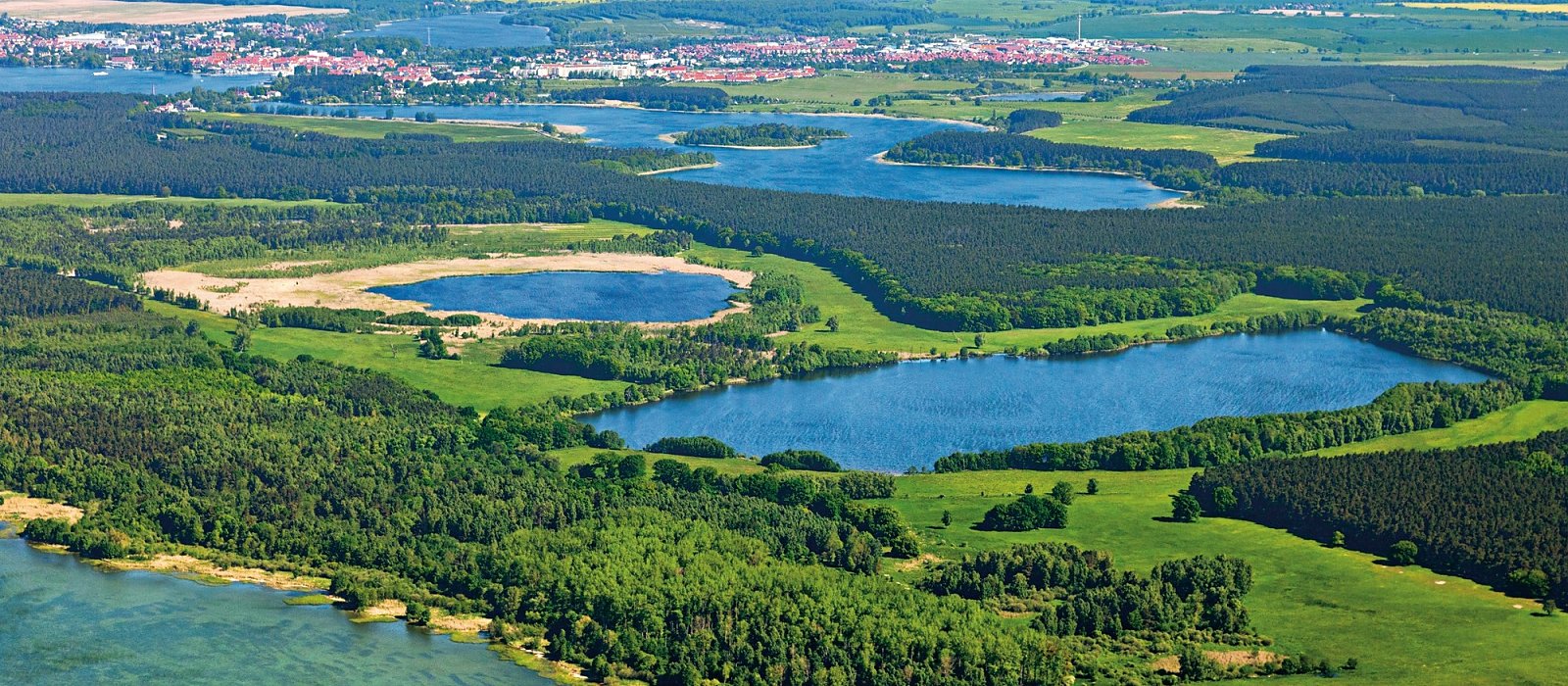The mecklenburger small lake district
The mecklenburg small-lake-district is next to the big lake district (Müritz, Kölping lake, Fleesen lake, Plauer lake) a part of the famous mecklenburger lake district. Like the Plöner lake district and the masurian lake district are these lake areas, but in a total different expansion, relics of the ice age(es). The ground and terrain surfaces are characterised by the loads of glaciers. The glaciers melted and built within the different sedimentation which characterise the landscape of this region until today. The landscape is pictured through waterway systems which are compared to the european low mountain range really young.The catchment areas of the lakes are limited to the direct surroundings because they have no inflow over a widely ramified river- and stream system. If you will find something similar as a river or a stream, it’s often trenches made by humans. Except for example the Peene, also known as the amazon of the north.
With the beginning of the east colonisation in the 11th century the intervention in the until then natural waterway systems began. They created drainage ditches, (wood-)raft canals or inflow ditches to create mill pile-ups. With this intervention, the humans connected the lakes and their small inland drainage areas. One famous lake is the Stechlin lake. This lake is in a physiographically discrete area within the Mecklenburger lake district but pertains to Brandenburg.This lake contains to one of our water-hike travel tours – but you’re not able to get there with a kayak or a canoe. With a short hike we offer you to get to the Stechlin lake. This lake is as far as possible isolated and lives from the substance input of his direct surroundings. The surrounding area is determined through the vegetation of the deep sandy soils in the nature park Stechlin-Ruppiner territory. Due to the small primary production in the mass balance (trophic level) we’re talking about an approximate oligotrophic freshwater lake. The big Stechlin lake is one of the last freshwater lakes in north germany with drinking water quality and visible depth until 11 meters.
Canoe
Kanu: is (in german) the generic term for all coasters with which you can paddle. Often you use it to describe a kayak.
Kayak
Kayak: Originally developed boat from the inuit. In the primal form it was built from wood, bones and animal skin. You drive the kayak sitting with your legs forwards with a double-bladed paddle. Today our solide kayaks for 1 or 2 are made from polyethylen and are almost indestructible. You manage the kayak with the paddle or steering system which you operate with foot pedals.
Canadier
Canadier: These boats were used by north americans and were also made from wood, animal skin or tree bark. You paddle the canadier with a single-blade paddle and initially on your knees. But the canadier today usually have benches and are made from solid plastic. The size of a boat varied from 1 to large group boats to 20 persons. But our water boats aren’t yousefull with more than 4 people. You manage the canadier through special control strokes with a single-blade paddle.
The agony of choice
There is no general answer and the personal preferences are individual. Basicaly there are some differences: The canadier usually has a bigger space offer (if you have a lot uf luggage you can travel without problems with 2 people in a canadier for 4). In the long run you’re sitting more comfortably in a canadier, when you take one knee on the boat bottom (kneeling-chair effect= straight back). But in a kayak with a spray deck and raincoat you stay dry during rain and it’s usually a bit faster with a kayak. Furthermore, a kayak (with a steering system) is often easier to handle for beginners. Next to the “running stability” you have to consider the “tilting stability” which is bigger in a candier (look the last video)
Um die Karten zu sehen, müssen Sie das Laden externer Medien akzeptieren.
Um die Karten zu sehen, müssen Sie das Laden externer Medien akzeptieren.
Um die Karten zu sehen, müssen Sie das Laden externer Medien akzeptieren.








